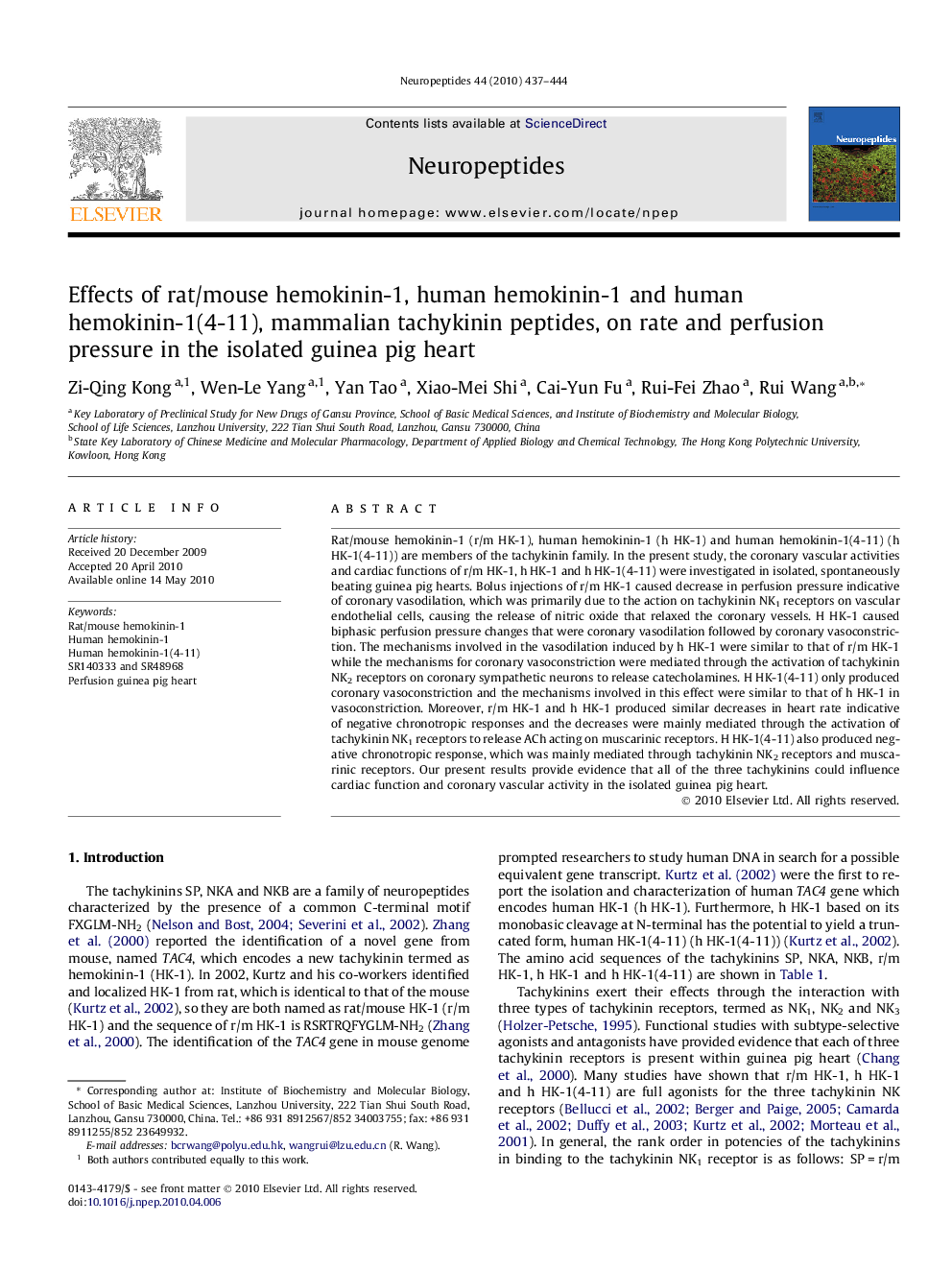| Article ID | Journal | Published Year | Pages | File Type |
|---|---|---|---|---|
| 2808212 | Neuropeptides | 2010 | 8 Pages |
Rat/mouse hemokinin-1 (r/m HK-1), human hemokinin-1 (h HK-1) and human hemokinin-1(4-11) (h HK-1(4-11)) are members of the tachykinin family. In the present study, the coronary vascular activities and cardiac functions of r/m HK-1, h HK-1 and h HK-1(4-11) were investigated in isolated, spontaneously beating guinea pig hearts. Bolus injections of r/m HK-1 caused decrease in perfusion pressure indicative of coronary vasodilation, which was primarily due to the action on tachykinin NK1 receptors on vascular endothelial cells, causing the release of nitric oxide that relaxed the coronary vessels. H HK-1 caused biphasic perfusion pressure changes that were coronary vasodilation followed by coronary vasoconstriction. The mechanisms involved in the vasodilation induced by h HK-1 were similar to that of r/m HK-1 while the mechanisms for coronary vasoconstriction were mediated through the activation of tachykinin NK2 receptors on coronary sympathetic neurons to release catecholamines. H HK-1(4-11) only produced coronary vasoconstriction and the mechanisms involved in this effect were similar to that of h HK-1 in vasoconstriction. Moreover, r/m HK-1 and h HK-1 produced similar decreases in heart rate indicative of negative chronotropic responses and the decreases were mainly mediated through the activation of tachykinin NK1 receptors to release ACh acting on muscarinic receptors. H HK-1(4-11) also produced negative chronotropic response, which was mainly mediated through tachykinin NK2 receptors and muscarinic receptors. Our present results provide evidence that all of the three tachykinins could influence cardiac function and coronary vascular activity in the isolated guinea pig heart.
